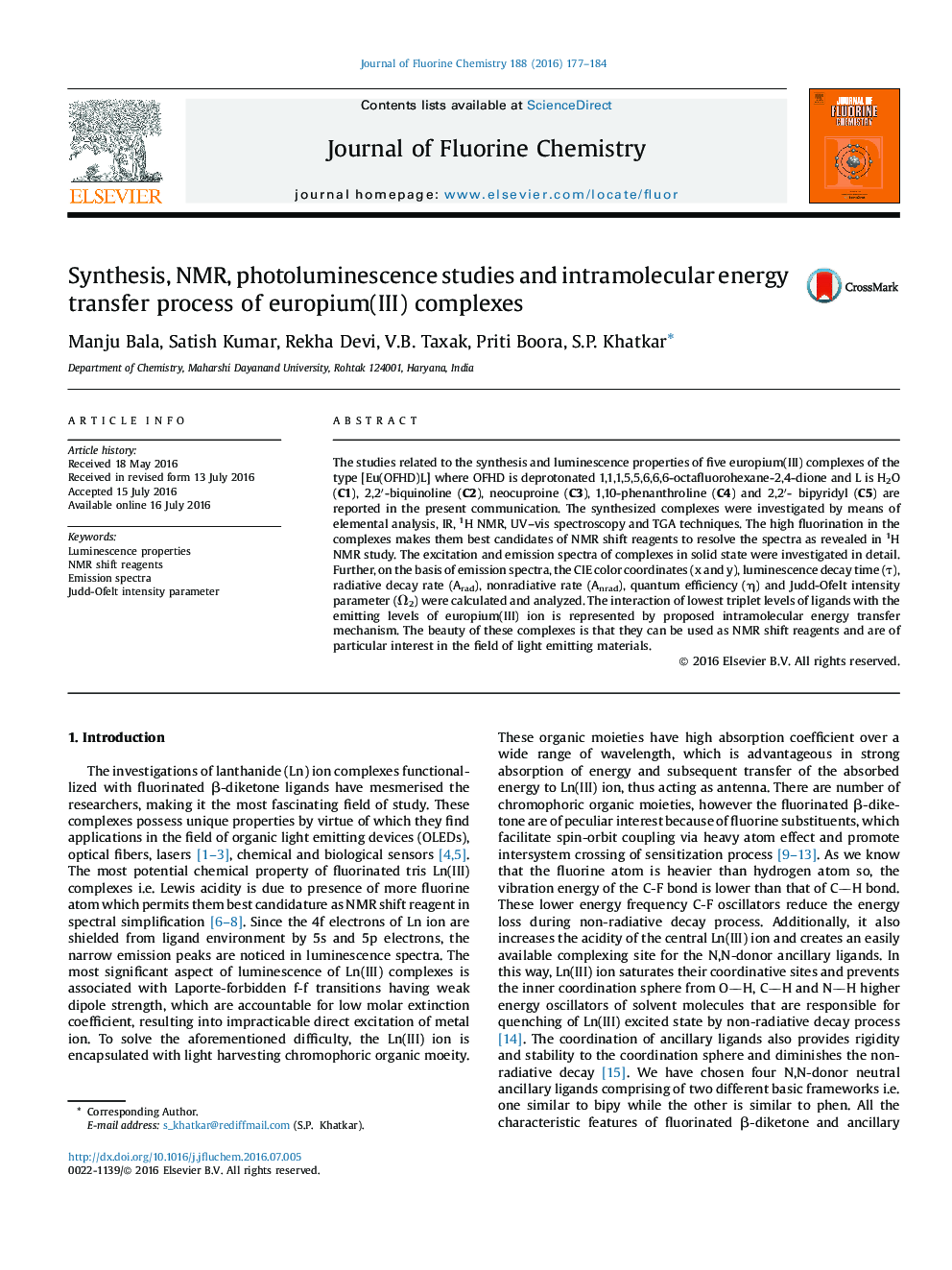| Article ID | Journal | Published Year | Pages | File Type |
|---|---|---|---|---|
| 1313536 | Journal of Fluorine Chemistry | 2016 | 8 Pages |
•Five new europium(III) complexes have been synthesized.•IR, NMR, CHN, TG-DTG, UV–vis, PL techniques for the complexes.•Complexes can also be used as NMR shift reagents.•Excellent luminescence properties of complexes are observed.•They can be used as red component in light emitting materials and displays devices.
The studies related to the synthesis and luminescence properties of five europium(III) complexes of the type [Eu(OFHD)L] where OFHD is deprotonated 1,1,1,5,5,6,6,6-octafluorohexane-2,4-dione and L is H2O (C1), 2,2′-biquinoline (C2), neocuproine (C3), 1,10-phenanthroline (C4) and 2,2′- bipyridyl (C5) are reported in the present communication. The synthesized complexes were investigated by means of elemental analysis, IR, 1H NMR, UV–vis spectroscopy and TGA techniques. The high fluorination in the complexes makes them best candidates of NMR shift reagents to resolve the spectra as revealed in 1H NMR study. The excitation and emission spectra of complexes in solid state were investigated in detail. Further, on the basis of emission spectra, the CIE color coordinates (x and y), luminescence decay time (τ), radiative decay rate (Arad), nonradiative rate (Anrad), quantum efficiency (η) and Judd-Ofelt intensity parameter (Ω2) were calculated and analyzed. The interaction of lowest triplet levels of ligands with the emitting levels of europium(III) ion is represented by proposed intramolecular energy transfer mechanism. The beauty of these complexes is that they can be used as NMR shift reagents and are of particular interest in the field of light emitting materials.
Graphical abstractFigure optionsDownload full-size imageDownload as PowerPoint slide
